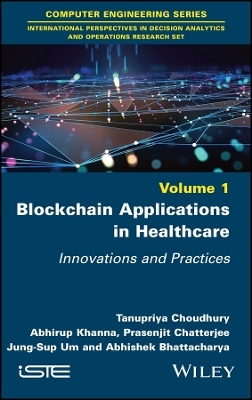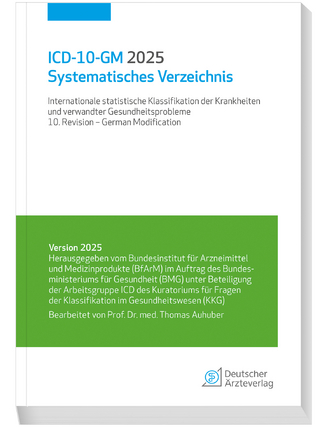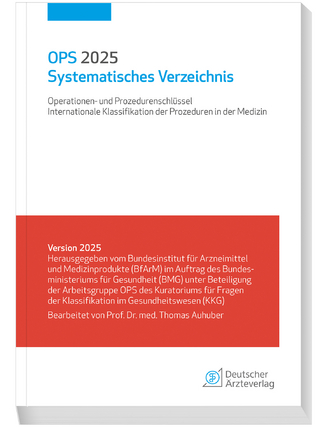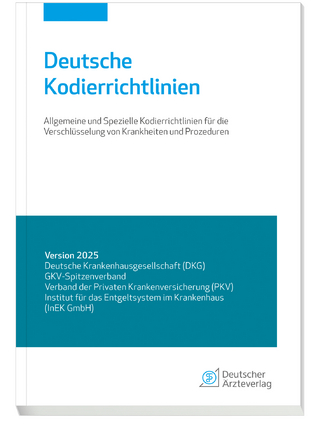
Blockchain Applications in Healthcare
ISTE Ltd and John Wiley & Sons Inc (Verlag)
978-1-78630-894-8 (ISBN)
This book focuses on the fundamentals of Blockchain technology along with the methods of its integration with the healthcare industry. It also provides an enhanced understanding of Blockchain technology, AI and IoT across the various application areas of the healthcare industry. Furthermore, throughout the book, areas of relevant applications, such as patient data privacy protection, pharmaceutical supply chains and genomics are discussed.
Tanupriya Choudhury is a Senior Associate Professor in the Informatics Cluster at the University of Petroleum and Energy Studies (UPES), Dehradun, Uttarakhand, India. Abhirup Khanna is an Assistant Professor in Systemic Cluster at the University of Petroleum and Energy Studies (UPES), Dehradun, Uttarakhand, India. Prasenjit Chatterjee is the Dean (Research and Consultancy) at MCKV Institute of Engineering, India. Jung-Sup Um is Editor-in-Chief of Spatial Information Research. He is a Professor at Kyungpook National University, South Korea. Abhishek Bhattacharya is a Co-founder at Whrrl and a Forbes 30 under 30. He is currently building India's first Agri-Fintech Blockchain platform, expecting to bring many benefits and solutions to a range of sectors.
Foreword xiii
Praveen KUMAR and Roohi SILLE
Preface xv
Tanupriya CHOUDHURY, Abhirup KHANNA, Prasenjit CHATTERJEE, Jung-Sup UM, Abhishek BHATTACHARYA
Acknowledgments xix
Chapter 1 Framework for Blockchain in Healthcare 1
Neha MEHTA, Jyoti AHLAWAT and Leena ARYA
1.1 Concept of Blockchain 2
1.2 Blockchain as distributed database 7
1.3 Architecture of Blockchain in healthcare 9
1.4 Development of Blockchain: A state of art 12
1.5 Information distribution in Blockchain 15
1.6 The growing anticipation of Blockchain 15
1.6.1 Challenges faced by Blockchain 17
1.7 The benefits of Blockchain in healthcare 18
1.8 Open issues related to Blockchain 19
1.9 Future trends of Blockchain 21
1.10 References 21
Chapter 2 Role of Smart Contracts in Blockchain 23
Avita KATAL, Teoh Teik TOE and Tanupriya CHOUDHURY
2.1 Introduction to Blockchain 23
2.1.1 Types of Blockchain 25
2.1.2 Characteristics of Blockchain 26
2.2 Smart contracts 26
2.2.1 Operating mechanism of smart contracts 27
2.2.2 Applications of smart contracts 28
2.2.3 Programming languages and platforms 30
2.3 Quantitative analysis 31
2.3.1 Results 32
2.4 Role of smart contracts in healthcare 34
2.4.1 Health Insurance 34
2.4.2 Healthcare 34
2.4.3 Telemedicine 35
2.5 Example of smart contracts 35
2.5.1 Simple open auction 35
2.5.2 Voting 38
2.5.3 Patient record 42
2.6 Challenges related to smart contracts 44
2.6.1 Contract vulnerabilities 44
2.6.2 Privacy and legal issues 46
2.6.3 Immutability issue 46
2.7 Conclusion 46
2.8 References 47
Chapter 3 Blockchain-based Platforms for the Healthcare Industry 49
Dakshita NEGI, Anushree SHAH, Saurabh RAWAT and Tanupriya CHOUDHURY
3.1 Introduction 49
3.2 Literature review 50
3.3 Blockchain technology 55
3.3.1 Uses of Blockchain in the healthcare sector 56
3.4 Blockchain applications that can be useful for treating the medical sector problems 57
3.4.1 Smart contracts 57
3.4.2 Fraud detection 57
3.4.3 Identity verification 58
3.5 Examples of healthcare platforms using Blockchain 58
3.5.1 Data sharing using Gem Health Network 58
3.5.2 MeDshare 59
3.5.3 OmniPHR 59
3.6 Blockchain during the Covid-19 pandemic 60
3.7 Conclusion 61
3.8 References 61
Chapter 4 Analyzing and Modeling the Challenges Faced by the Healthcare Sector in the Adoption Process of Blockchain Technologies 65
Subhodeep MUKHERJEE, Manish Mohan BARAL and Venkataiah CHITTIPAKA
4.1 Introduction 65
4.2 Literature review 67
4.2.1 Blockchain in healthcare 67
4.3 Challenges of Blockchain in healthcare 68
4.3.1 Technical challenges (TC) 68
4.3.2 Social challenges (SC) 68
4.3.3 Organizational challenges (OC) 69
4.4 Research methodology 69
4.5 Data analysis 70
4.6 Discussion 75
4.7 Conclusion 75
4.8 References 76
Chapter 5 Blockchain as an Effective Technology in Maintaining Electronic Health Record Systems 81
Avita KATAL, Vitesh SETHI, Hussain Falih MAHDI and Tanupriya CHOUDHURY
5.1 Introduction 81
5.2 Background concepts on Blockchain technology 82
5.2.1 Consensus algorithms 82
5.2.2 Types of Blockchain 83
5.2.3 Smart contracts 85
5.2.4 Features of Blockchain 86
5.2.5 Applications of Blockchain technology 87
5.3 Blockchain in healthcare 89
5.4 Electronic health records using Blockchain 90
5.5 Quantitative analysis 91
5.5.1 Results 93
5.6 Proposed framework for the EHRs using Blockchain 95
5.6.1 System workflow 95
5.7 Issues in Blockchain-based EHRs 96
5.8 Case studies 97
5.8.1 MedRec 97
5.8.2 AI-based solution for EHRs 98
5.8.3 Improving medical record keeping with Blockchain 100
5.9 Conclusion 100
5.10 References 101
Chapter 6 An Optimistic Approach to Share Private Health Records Using Blockchain Technology 103
P. PRAVEEN, Mohammed Ali SHAIK, B. RAMA and V. ANITHA
6.1 Introduction 103
6.2 Related work 104
6.2.1 Process of storing larger healthcare data 105
6.3 Blockchain-based EHR system 106
6.3.1 Sharing of data 108
6.3.2 Interoperability 108
6.3.3 A distributed network 109
6.3.4 Shared ledger 110
6.3.5 Digital transactions 110
6.4 Blockchain in healthcare 110
6.4.1 On-chain storage 110
6.4.2 Off-chain storage 111
6.4.3 Trust issues in the context of health information exchange (HIE) 111
6.5 Conclusion and future scope 114
6.6 References 115
Chapter 7 Patient Data Privacy Using Blockchain 117
Jatin SETHI and ALIND
7.1 Introduction 118
7.2 Threat modeling – digitalization in the healthcare industry 119
7.2.1 Data flow diagram (DFD) 120
7.2.2 Threat analysis 122
7.3 Privacy versus security 123
7.3.1 Privacy in Blockchain 124
7.3.2 Process flow 127
7.4 Regulatory compliance requirements 129
7.4.1 HIPAA, HITRUST, HITECH and GDPR 130
7.4.2 Blockchain as a savior 131
7.5 Differential privacy 132
7.5.1 Local differential privacy versus global differential privacy 133
7.5.2 Quantification of privacy and mathematical form of differential privacy 134
7.5.3 Advantages of using differential privacy in Blockchain 135
7.6 Privacy by Design 135
7.7 Conclusion 136
7.8 References 136
Chapter 8 Decentralized Smart Healthcare Systems Using Blockchain and AI 139
R.S.M. Lakshmi PATIBANDLA, Arepalli Peda GOPI, V. Lakshman NARAYANA and B. Tarakeswara RAO
8.1 Introduction to the healthcare system 139
8.1.1 Introduction to AI 140
8.1.2 Introduction to Blockchain 141
8.2 Use of AI in healthcare systems 142
8.3 Use of Blockchain in healthcare systems 143
8.4 History of medical care 144
8.4.1 Health claims 144
8.4.2 Interoperability 145
8.4.3 Exposure to healthcare 145
8.4.4 Supply chains 145
8.5 Literature review 146
8.6 Bringing intelligence to medical devices and machines 147
8.7 Using artificial intelligence to transform clinical decision-making in hospitals 149
8.7.1 Advantages of Blockchain in healthcare systems 150
8.8 Results of existing models 152
8.9 Conclusion 153
8.10 References 153
Chapter 9 Component-based Healthcare Software Application Using Blockchain 155
Nisha PAL and Dharmendra Kumar YADAV
9.1 Introduction 156
9.2 Literature review 160
9.3 Software development models 165
9.3.1 Traditional software development methodologies 166
9.3.2 Modern software development methodologies 171
9.4 Proposed model 178
9.4.1 Component-based software development life-cycle 179
9.4.2 Component development life-cycle 180
9.5 Comparison among different software development life-cycle models 182
9.6 Conclusion and future works 182
9.7 References 185
Chapter 10 The Role of Smart Contracts and Blockchain Technology in Healthcare and Other Use Cases 189
Abhishek BHATTACHARYA, Tanupriya CHOUDHURY and Roohi SILLE
10.1 Introduction 189
10.1.1 Comparison between traditional contracts and smart contracts 190
10.2 Ethereum: Generation Two of Blockchain technology 191
10.2.1 History of Ethereum 191
10.3 Smart contracts 192
10.3.1 How smart contracts work 192
10.3.2 Benefits of smart contracts 193
10.3.3 Roles of smart contracts 193
10.4 Use of smart contracts in healthcare, patient monitoring, and other use cases 194
10.4.1 Transparency in supply chain 195
10.4.2 Electronic health records on the Blockchain 195
10.4.3 Use of smart contracts for insurance and billing in supply chain management 196
10.4.4 Verification of medical personnel’s identity cards 196
10.4.5 IoT security for remote patient monitoring 197
10.5 Building smart contracts on the Ethereum Blockchain 197
10.5.1 Ethereum virtual machine (EVM) 197
10.5.2 Gas 198
10.5.3 Solidity 198
10.6 Real-time use cases of smart contracts 199
10.6.1 Smart contracts and insurance 199
10.6.2 Smart contracts in an electric vehicle 199
10.6.3 Smart contracts in the energy sector 199
10.6.4 Intellectual property rights 200
10.6.5 Stock trading 200
10.7 Six companies using smart contracts in real-world applications 200
10.7.1 Slock.It 200
10.7.2 Fizzy AXA 201
10.7.3 Etherparty 201
10.7.4 Propy 201
10.7.5 Populous 202
10.7.6 PolySwarm 202
10.8 Challenges 203
10.9 Historical attacks and issues with smart contracts 203
10.10 Conclusion 204
10.11 References 205
Chapter 11 Healthcare Research Using Blockchain Technology: A Future Perspective 207
Bhumika SHARMA, Roohi SILLE and Tanupriya CHOUDHURY
11.1 Introduction 207
11.2 Benefits of using Blockchain in the healthcare industry 208
11.3 Application of Blockchain in the healthcare industry 209
11.4 Merging of Blockchain with artificial intelligence in healthcare 211
11.5 Drawbacks of using Blockchain in the healthcare industry 211
11.6 Conclusion and future scope 212
11.7 References 213
List of Authors 215
Index 219
| Erscheinungsdatum | 24.08.2023 |
|---|---|
| Verlagsort | London |
| Sprache | englisch |
| Gewicht | 644 g |
| Themenwelt | Mathematik / Informatik ► Informatik ► Datenbanken |
| Informatik ► Weitere Themen ► Bioinformatik | |
| Medizin / Pharmazie | |
| Technik ► Elektrotechnik / Energietechnik | |
| Technik ► Medizintechnik | |
| ISBN-10 | 1-78630-894-0 / 1786308940 |
| ISBN-13 | 978-1-78630-894-8 / 9781786308948 |
| Zustand | Neuware |
| Informationen gemäß Produktsicherheitsverordnung (GPSR) | |
| Haben Sie eine Frage zum Produkt? |
aus dem Bereich


